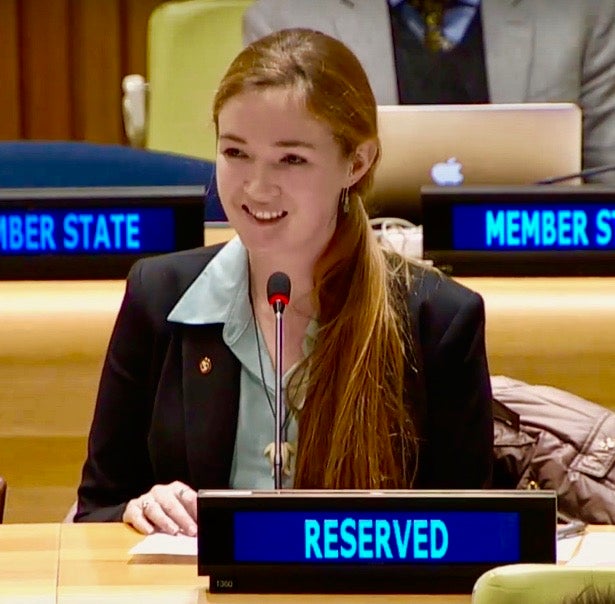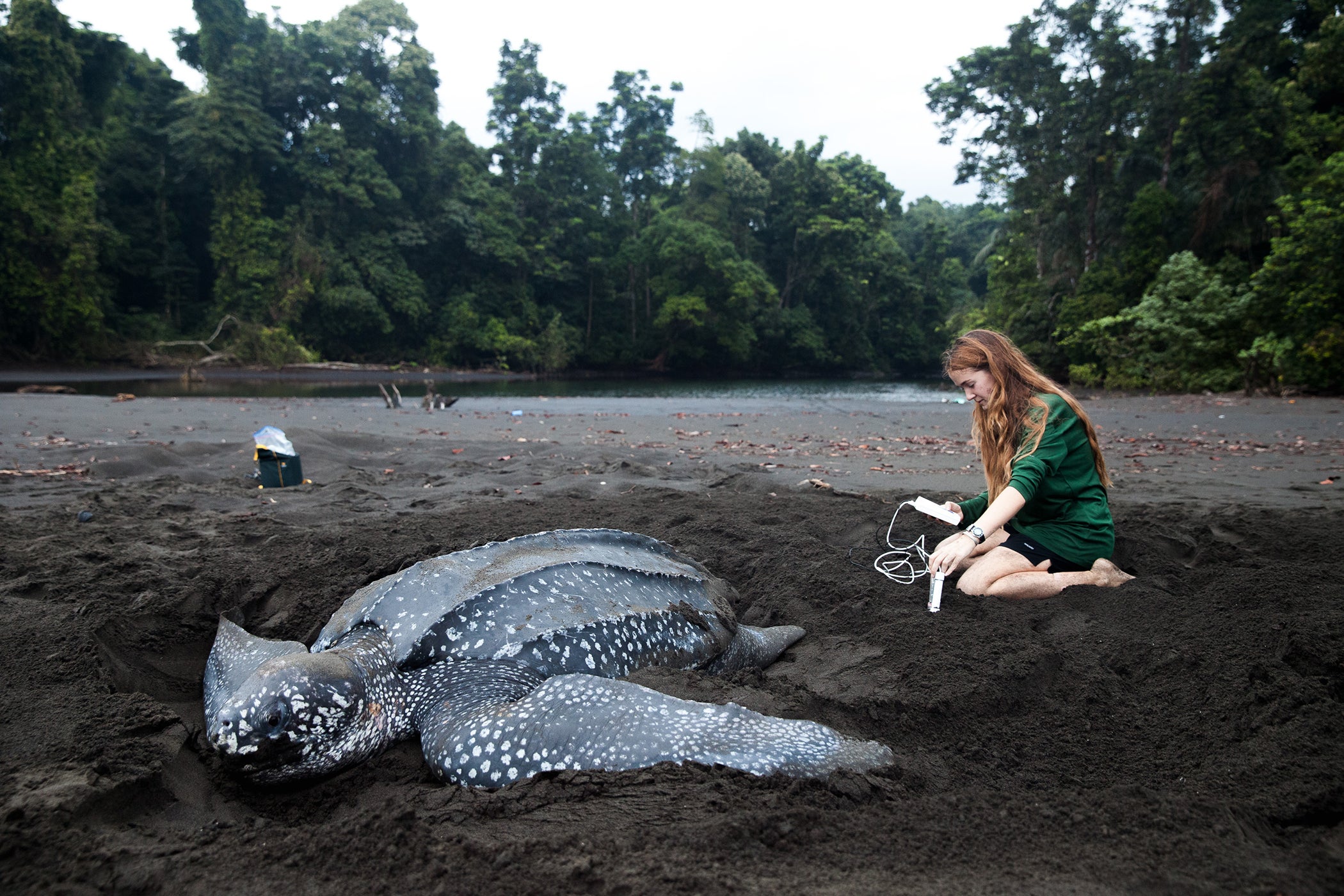KINGSTON, R.I. – June 25, 2019 – Callie Veelenturf has had a remarkable five years since graduating from the University of Rhode Island in 2014 with a degree in marine biology.
She worked in Costa Rica and St. Kitts to protect rare sea turtles, earned a master’s degree at Purdue University while studying the effect of climate change on sea turtle reproduction in West Africa, published her first scientific journal article, traveled in a deep-sea vehicle 700 feet below the ocean surface as part of a shark research expedition, worked for the Turtle Island Restoration Network in California, and won a photography contest sponsored by the journal Nature.
Her early-career accomplishments don’t end there. In just the last year, she was named a National Geographic Explorer and a fellow of The Explorers Club, spoke at the United Nations on behalf of Youth for Wildlife Conservation, and started her own non-profit organization, The Leatherback Project.

It’s been a whirlwind, said Veelenturf, a native of Norfolk, Massachusetts, with so much happening so quickly that she can’t quite believe it all.
At the United Nations in March, she spoke about the role of youth in wildlife conservation, using her own experiences as an example.
“I spoke about how it’s our job, as youth, to bring a lack of complacency and a sense of urgency to the table, to raise our voices and be boots-on-the-ground daring to go to remote places to implement conservation strategies,” she said. “If there could be more connectedness between experienced delegates at the U.N. and youth on the ground executing conservation strategies, our efforts would be more successful in the long run.”
The speaking opportunity arose when Youth for Wildlife Conservation asked her to be an ambassador for the organization and to speak during the U.N.’s World Wildlife Day.
“Based on my experiences in marine conservation, they felt that what I would have to say would be powerful,” she said.
The day before she received the invitation to speak at the U.N., Veelenturf got another important email, this one from the National Geographic Society approving her research grant and naming her to the list of the group’s distinguished explorers. The honor includes special grant opportunities, access to National Geographic Society classes, a free remotely-operated underwater vehicle for use in her research, and the chance to have her work featured in National Geographic magazine.
“Outwardly, it means that National Geographic thinks I’m someone who exemplifies the values of science, investigation and purposeful exploration, with a commitment to share those values with the public,” she said. “It means the world to me. I grew up with that magazine on my coffee table, so to become part of that community and earn their support is a great honor.”
Veelenturf became interested in sea turtle conservation after snorkeling on a coral reef in Hawaii as a high school student. When a large shadow approached, she turned to see a 400-pound green sea turtle swim within a few feet and stare at her.
“It looked into my eyes – and into my soul – and I knew immediately that I wanted to study marine biology and especially sea turtles,” she said.
Her more recent sea turtle work led to her formation of The Leatherback Project, with the objective of conserving leatherback turtles around the globe through community outreach and research. Her first step is to create a photo identification database of the endangered turtles so researchers, fishermen and the public will be able to participate in identifying individual turtles, which will help understand their populations and movements.
Despite her very busy year, Veelenturf isn’t slowing down. She is traveling to Colombia later this month to participate in a shark tagging research expedition and speak with community leaders about protecting sea turtles on local beaches. Next fall she will begin a five-month project in Panama searching for new sea turtle nesting beaches, investigating fisheries bycatch and the human use of turtles, and working to educate area residents about the threats the turtles face.
“Now is the time for taking action,” she said. “I want to be able to look back and know that I did everything that I could while I had the chance.”

